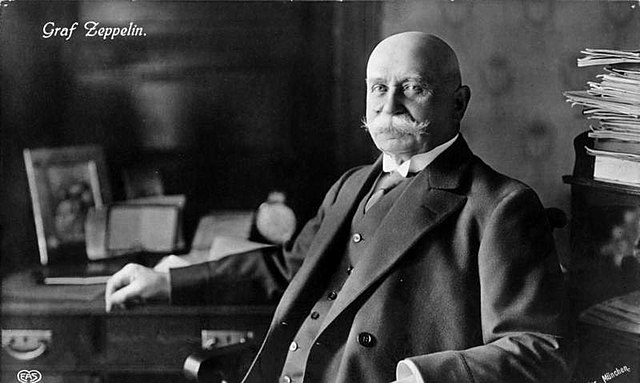The Pomeroy bullet was designed by New Zealander John Pomeroy (1873–1950) as an anti-zeppelin weapon. Pomeroy bullets were supposed to explode when encountering the minimal resistance of fabric envelopes containing hydrogen gas holding the zeppelin aloft. The explosion might produce a larger hole in the fabric than the small diameter bullet and the energy of the explosion might ignite the hydrogen in the presence of atmospheric oxygen outside of the envelope.
Pomeroy bullets were used by fighter aircraft attacking zeppelins.
A Zeppelin is a type of rigid airship named after the German inventor Ferdinand von Zeppelin who pioneered rigid airship development at the beginning of the 20th century. Zeppelin's notions were first formulated in 1874 and developed in detail in 1893. They were patented in Germany in 1895 and in the United States in 1899. After the outstanding success of the Zeppelin design, the word zeppelin came to be commonly used to refer to all forms of rigid airships. Zeppelins were first flown commercially in 1910 by Deutsche Luftschiffahrts-AG (DELAG), the world's first airline in revenue service. By mid-1914, DELAG had carried over 10,000 fare-paying passengers on over 1,500 flights. During World War I, the German military made extensive use of Zeppelins as bombers and as scouts. Numerous bombing raids on Britain resulted in over 500 deaths.
The USS Los Angeles, a United States Navy airship built in Germany by the Luftschiffbau Zeppelin (Zeppelin Airship Company)
Ferdinand von Zeppelin
The first flight of LZ 1 over Lake Constance (the Bodensee) in 1900
Zeppelin LZ 4 with its multiple stabilizers, 1908





